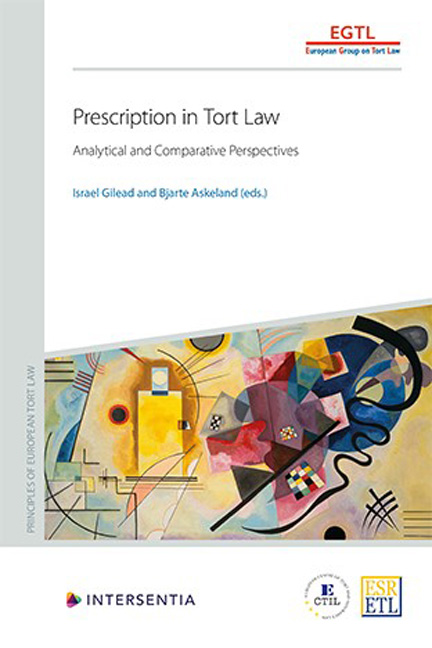Book contents
- Frontmatter
- Dedication
- Acknowledgements
- Contents
- List of Authors
- PART I THEORETICAL AND COMPARATIVE ANALYSES
- Analytical and Comparative Report
- Economic Analysis
- PART II PRESCRIPTION IN TORT LAW OUTLINED
- Case Scenarios
- Austria
- Belgium
- Czech Republic
- England and Wales
- France
- Germany
- Greece
- Italy
- The Netherlands
- Norway
- Poland
- South Africa
- Spain
- Switzerland
- United States
- European Union
- Appendix: Questionnaire
- About the Editors
The Netherlands
Published online by Cambridge University Press: 22 December 2020
- Frontmatter
- Dedication
- Acknowledgements
- Contents
- List of Authors
- PART I THEORETICAL AND COMPARATIVE ANALYSES
- Analytical and Comparative Report
- Economic Analysis
- PART II PRESCRIPTION IN TORT LAW OUTLINED
- Case Scenarios
- Austria
- Belgium
- Czech Republic
- England and Wales
- France
- Germany
- Greece
- Italy
- The Netherlands
- Norway
- Poland
- South Africa
- Spain
- Switzerland
- United States
- European Union
- Appendix: Questionnaire
- About the Editors
Summary
INTRODUCTION
Before the enactment of the new B urgerlijk Wetboek (Dutch Civil Code, hereafter‘BW‘) in 1992, in the Netherlands there was only one prescription period of 30 years for all private law claims. That period accrued the moment the plaintiff was entitled to claim performance of the obligation, which for tort claims was the moment the cause of action occurred. In the current Dutch Civil Code, not only is a distinction made between different claims– contractual, tort, etc– but also between two different prescription periods. For tort claims, there is the, so-called,'subjective‘or‘relative‘period of five years whose running is postponed until the day after the plaintiff is aware of both the damage and the thereof responsible person. And there is the, so-called,‘objective‘or‘absolute‘period of 20 years which starts to run following the moment the cause of the damage occurred. Although in general, this reform of the rules of prescription of tort claims was perceived as an improvement, there was still a lot of criticism on its functioning. Therefore, both the Dutch legislator and the Dutch Supreme Court made some changes to inter alia the commencement of the subjective prescription period and the prescription period of damage that is caused by injury or death.
In this report it will be explored how– and why– the passage of time on alleged tort claims affects the claim, the parties and third parties through the defence of prescription in the Netherlands. In order to do this, first in Sections II and III, the definition and the nature of prescription in the Netherlands will be introduced. After this, in Section IV the considerations for and against the prescription of tort claims will be discussed. Section V gives an overview of the elements of prescription. Subsequently, the starting point of the prescription period in the Netherlands will be examined in Section VI, and hereafter, in Section VII, the length of the Dutch prescription period for tort claims will be discussed.
- Type
- Chapter
- Information
- Prescription in Tort LawAnalytical and Comparative Perspectives, pp. 449 - 482Publisher: IntersentiaPrint publication year: 2020

